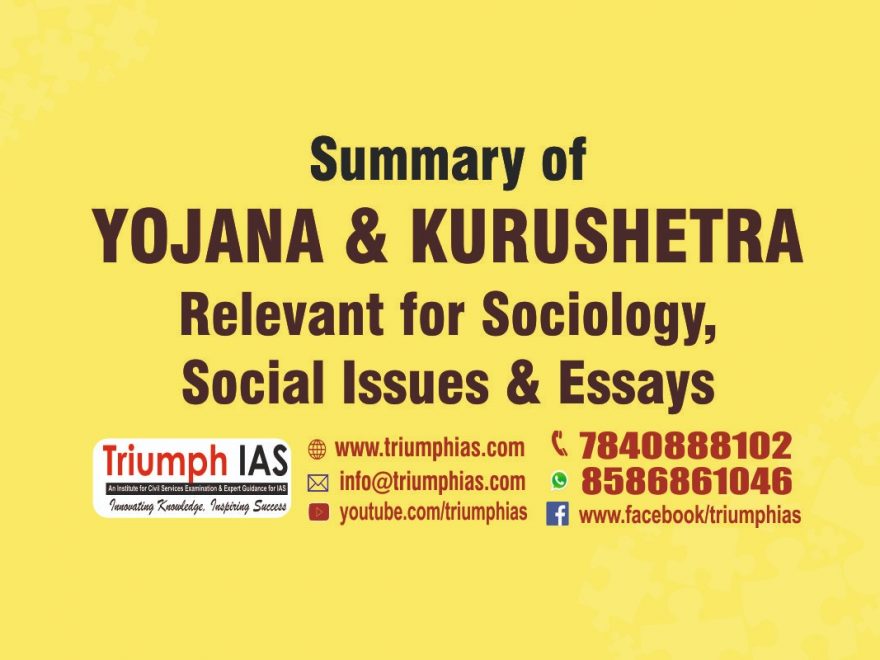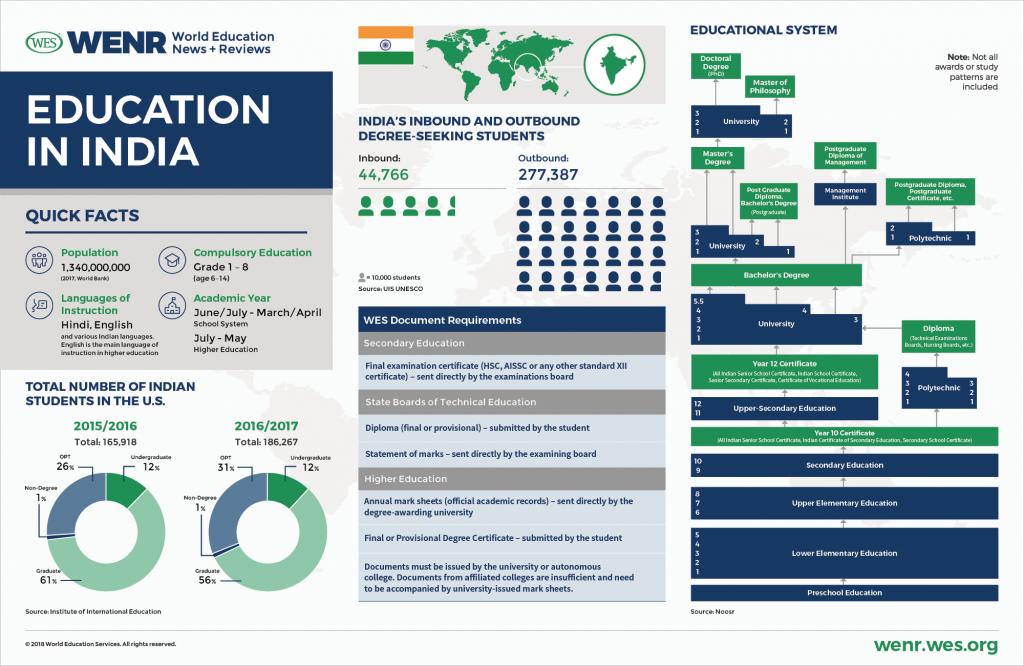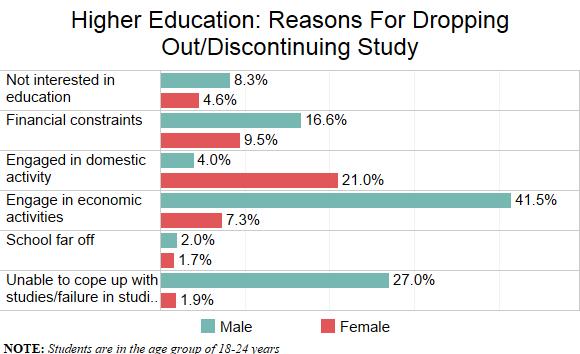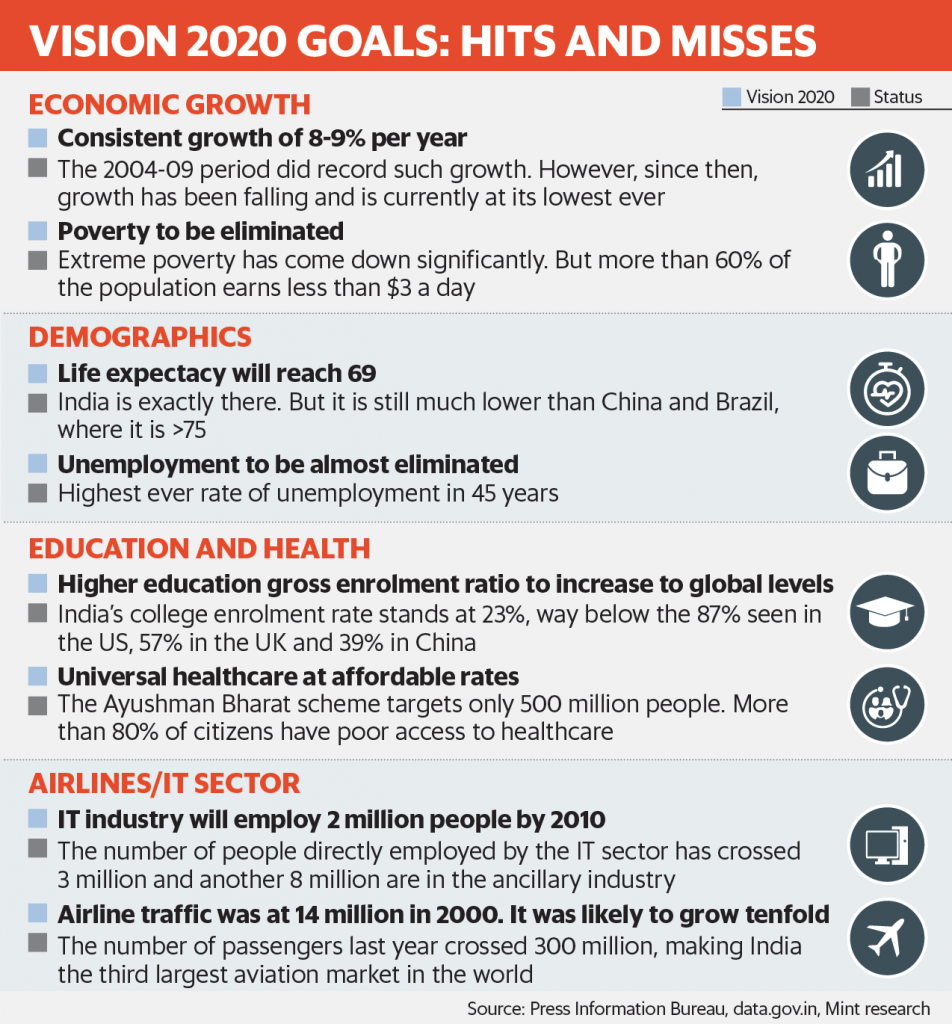Yojana Summary: Global Synergy in Higher Education
Relevance: Mains: G.S paper II: Education; G.S paper I: Society and Social Issues; Essay & Sociology Paper II: Education and social change
Introduction:
- India aims to become a five trillion dollar economy by 2024-25; the realisation of this goal is incumbent upon the capability of its education and training institutions to equip young Indians with knowledge and skills relevant to an evolving job markets.
• It needs quality, excellence, innovation and constant upgradation.
Aspiration in Higher Education:
- India’s draft National Education Policy aims at increasing the gross enrolment ratio (GER) in higher education to at least 50% by 2035, which would mean that one in four graduates in the world would be a product of the Indian higher education system.
• The current GER stands at just 26.3%, and doubling it in the next 15 years will require significant reforms both at planning and execution level. India’s GER is lower than the global average of 36.7%.
Opportunities:
- India enjoys a demographic dividend. It is world’s youngest country with an average age of 29. This comes at a time, when rest of the world is ageing. Average working age in US is 40, Western Europe is 46 and Japan is 47 years.
• Thus, India will not only have a young workforce to fulfil its domestic needs, it also has the opportunity to be the global hub for skilled workforce.
Higher Education – Critical Challenges for India:
- The above-mentioned opportunity also presents a challenge. If we fail to create a suitable environment, this dividend will be converted into demographic burden.
• Market forces have played a major role in the higher education landscape. Of the 993 universities in India, nearly 39% are privately managed. Of the 39,931 colleges, 78% are from private sector.
• Private colleges cater to 66.4% of the total enrolment in higher education, which means that a mere 22% of govt. colleges are catering to a disproportionately large number of students who could not afford to seek higher education in private Higher Education Institutions (HEIs).
• Increasing social aspirations have made the education divide between urban and rural centres more obvious.
• The college density (per one hundred thousand eligible population) is 28 nationally, it varies from 7 in Bihar to 53 in Karnataka.
• The opportunity cost of higher education (commute, hostel fees etc.) for disadvantaged section is often too high and hinders the education process.
• Low employability of graduates, poor quality of teaching, weak governance, insufficient funding, and complex regulatory norms continue to affect the Indian higher education sector.
• The number of international students is generally a reliable indicator of the quality and robustness of a higher education system. As of 2018-19, only 47,427 foreign students were enrolled in the Indian higher education system (China – more than 400000, Germany – More than 3,00,000).
• Globally India caters to less than one per cent of all International students.
• Indian institutes have failed to feature in the top 100 of world university rankings published by reputed ranking frameworks. The outflow of Indian students for education abroad is itself more than 15 times the inflow of international students to India.
Why We Need Global Cooperation?
- Getting the right education is critical for India to maximise the potential of its demographic dividend. India will not have the capacity to meet this demand on its own.
• NITI Aayog and several other organizations have developed policy documents on higher education that have stressed on the need of international assistance in higher education.
• India’s recently released draft National Education Policy 2019 proposes inviting the top 200 global universities to establish foreign branch campus in India.
• MHRD developed a five-year action plan named EQUIP (Education Quality Upgradation and Inclusion Programme). The initiative is made to bring transformation in the higher education system in the upcoming 5 years.
• NITI Aayog has more recently favoured the development of Exclusive Education Zones (EEZs) akin to SEZs in a few select cities in Bengaluru, Hyderabad, Ahmedabad, Pune, Chandigarh and parts of Sikkim, to boost growth in the flow of foreign students.
Opportunity for Deeper Engagement:
- International education is Australia’s third largest export industry. As a world class provider of education and training, Australia is well positioned to partner with India in the higher education sector.
• Linkages between HEIs and industries with diversified course offerings can prepare students for the job market.
• Global education institutes may also consider looking at building partnerships, beyond HEIs in metro cities of tier 2 and tier 3 cities and regional/state institutions, which offered tremendous possibilities because of large number of students with untapped potential and lack foreign collaborations currently.
• The joint student-academic mobility programmes, joint research, international collaborations boost rankings.
• India is also seeking to attract international faculty into the country for short-term research and teaching visits. Indian government initiatives like the Global Initiative of Academic Networks (GIAN), which provides funding for teaching at selected Indian higher education institutions and Scheme for Promotion of Academic and Research Collaboration (SPARC) are opportunities to be explored.
• However, lack of knowledge of India’s higher education sector, including how to address regulatory issues, contributes to low faculty participation in mobility schemes.
Way Forward:
- Partnership may look beyond silos and into areas where Australia has an advantage and India has a need, for instance, in mining safety, bio engineering, signal processing, AI, cyber security, climate change etc.
• Increasing the level of mutual cultural understanding and developing a strong knowledge base for India and Australia can further bolster these relations.
• Increased focus on vocational and professional led education can help India find ways to up-skill 400 million workers by 2022.
• However, what is needed is targeted and granular advice from governments to assist providers to identify, from the mass of possibilities, viable opportunities that match Australian strengths with Indian needs.
• Also, Indian students’ expectations around cost and employment outcomes need to be understood carefully.
For more such notes, Articles, News & Views Join our Telegram Channel.
Click the link below to see the details about the UPSC –Civils courses offered by Triumph IAS. https://triumphias.com/pages-all-courses.php




